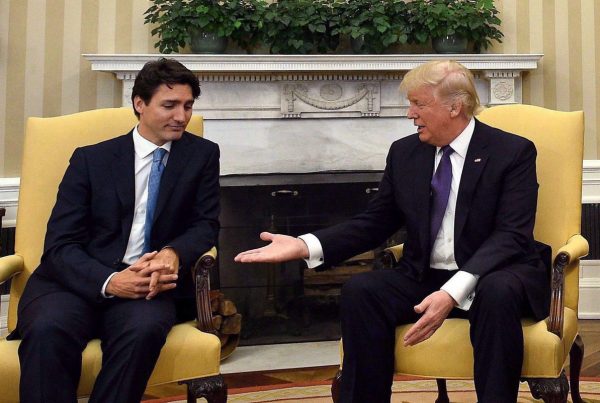In what turned out, alas, to be my last regular column for the Globe’s ROB, I point out that unemployment statistics hide more than they reveal. What tell us a lot more are the data for the shae of the population in paid work or looking for work, know as the labour force participation rate. Focusing on this number tells you lots about politics, the state of the economy, and even some of the roots of Donald Trump’s presidential victory. You can read the unedited text below or online here.
What do we know about the people who Donald Trump turned into such a potent political force in the last election? US unemployment is well below five percent; surely there was no objective basis for the economic insecurities that drove the “basket of deplorables” to vote for the Republican candidate.
Consider, though, that one of the best places to seek insight is not the unemployment rate, but the “labour-force participation” or LFP. The LFP shows the share of working age people who have jobs or are actively seeking jobs in the US. In other words it is also a pretty good measure of how many people have left the workforce because they are discouraged and feel there are no opportunities for them. What do we know about them?
Trump’s election coincides with the US LFP rate hitting its lowest level in more than 30 years. The state-by-state figures provide even more insight into Donald Trump’s political resonance.
Nine out of 10 states with the lowest LFP rates voted for him. Of the five states that went from Blue to Red in 2016, three – Florida, Michigan and Ohio – experienced a drop in their participation rate relative to 2012, meaning a smaller share of people worked and were looking for work compared to four years earlier. The other two states had no increase in the share of people working despite several years of modest economic growth.
By contrast, the years of Bill Clinton’s presidency coincided with a high LFP rate, a time when workers were prepared to give Bill “I feel your pain” Clinton the benefit of the doubt about how trade would improve Americans’ standard of living and those harmed would not be left behind. No more. That good will is gone.
New research from the centre-right American Enterprise Institute think tank shows that millions of American men are jobless and have given up looking. The share of men 20 and older without paid work is nearly 32 percent. That bears repeating: basically a third of all men in America who are over 20 have no paid employment. Two economists at the centre-left Brookings Institution have now added that the LFP rate of prime-age women has stagnated and also declined. People collecting disability benefit has increased markedly.
This doesn’t just affect their job prospects. Other research, including by a Nobel laureate, shows that the life expectancy and health of these displaced and discouraged workers has gone into a tailspin thanks largely to illnesses related to drug and alcohol abuse and other “lifestyle” factors. As one analyst said, these people are dying of despair, with over half a million needless deaths being attributed to bleak job prospects.
So looking solely at the unemployment rate causes us to lose sight entirely of a major part of the population. This segment is not just constituted of men–and now increasingly women–left behind by economic change. It also includes their parents, friends, and colleagues, who see these people they care about left on the shelf and are angered that opportunities for them seem so few and far between. This starts to be a significant part of the population—and the electorate.
It is no answer to say that these people have misdiagnosed their plight when they follow Trump in seeing trade and immigration as the cause of their problems. Yes, the problem is far more down to automation and other productivity-enhancements, meaning that manufacturing requires fewer and fewer poorly-educated, relatively low-skilled workers. Yes, Trump is wrong when he says that America doesn’t make things anymore and needs to return to this economic vocation. The truth is that America has never made more things than it does today. It just doesn’t require many workers to do so.
But the fact that the diagnosis is incorrect misses the key point about Trump’s voters – they vote for him chiefly because they feel he is the only political leader who doesn’t simply dismiss their fears and anxieties as misguided and ill-informed and doesn’t tell them condescendingly that their problems will disappear if only they get a university degree or if the government institutes a guaranteed annual income and basically writes them off as contributing members of society.
A pervasive feeling has taken hold in many parts of American society that ordinary people are being made to pay the price of the ideals of the elites. Free trade is one such ideal, one in which I happen to believe, but also one whose highly-concentrated destructive effects are undeniable and frequently easier to identify than its widely-dispersed benefits. That is why free trade can only be sustained when the winners use the extra wealth created to compensate the losers – something we, like the Americans, have done poorly and unimaginatively.
Brian Lee Crowley (twitter.com/brianleecrowley) is the Managing Director of the Macdonald-Laurier Institute, an independent non-partisan public policy think tank in Ottawa: www.macdonaldlaurier.ca.


